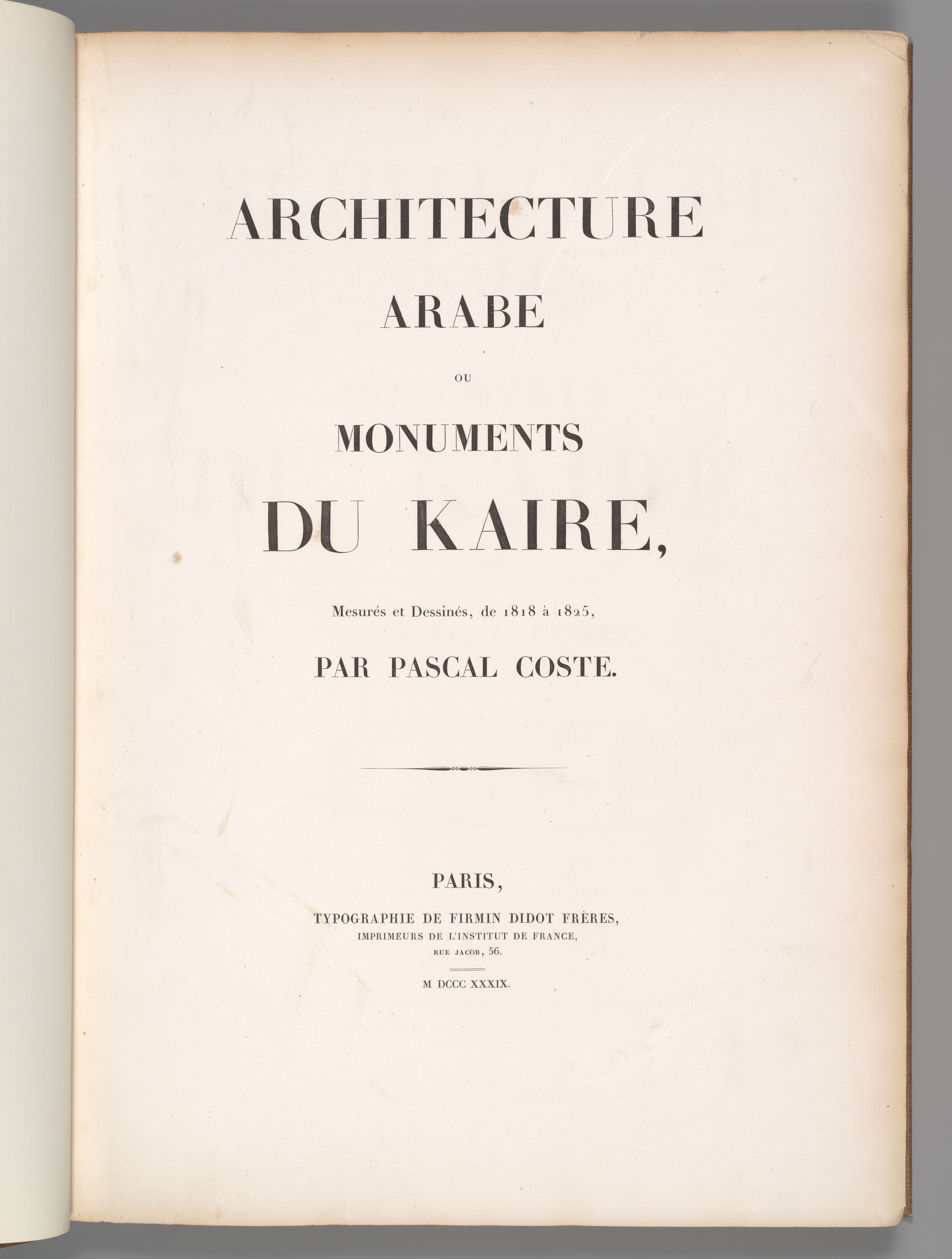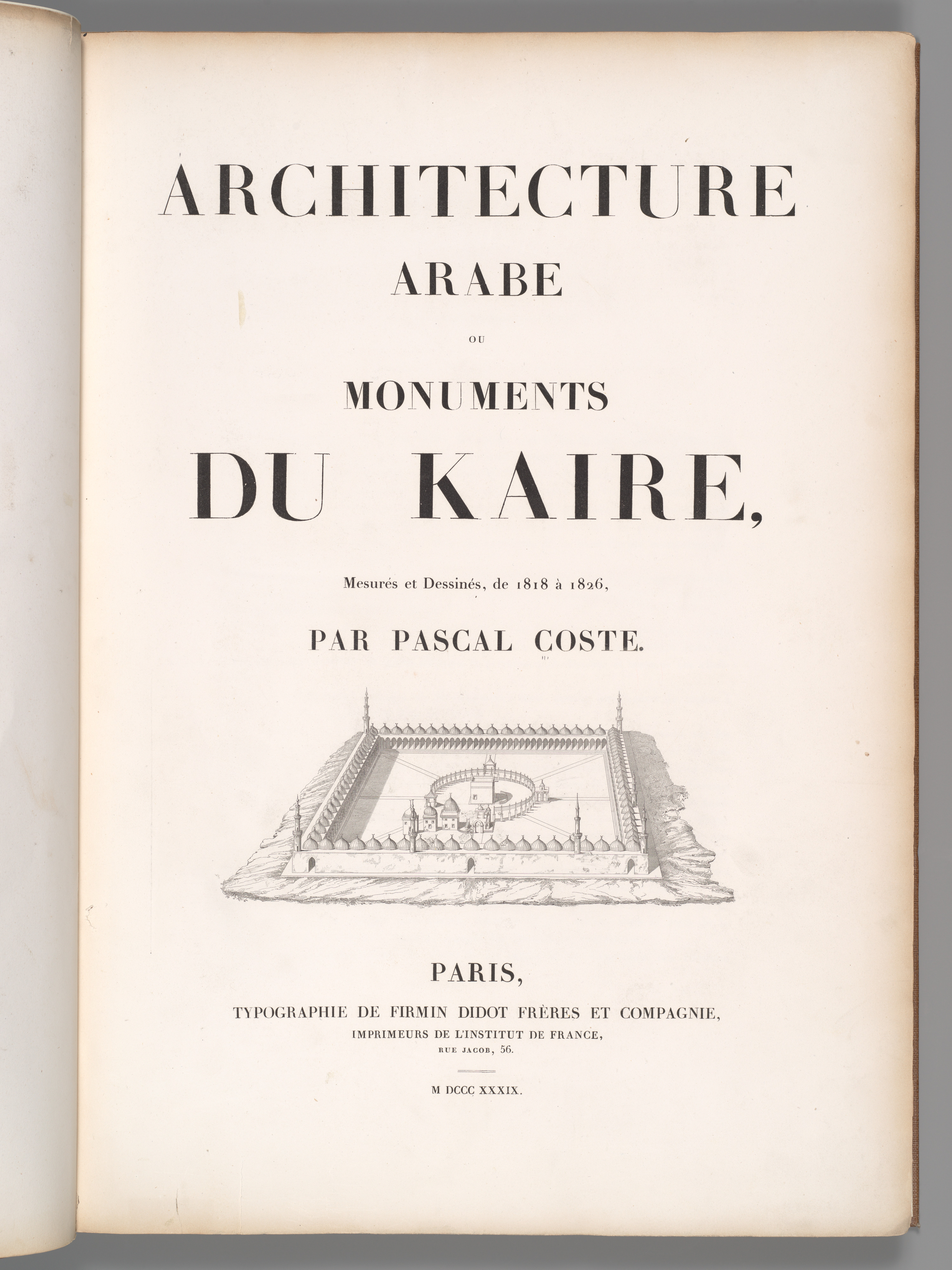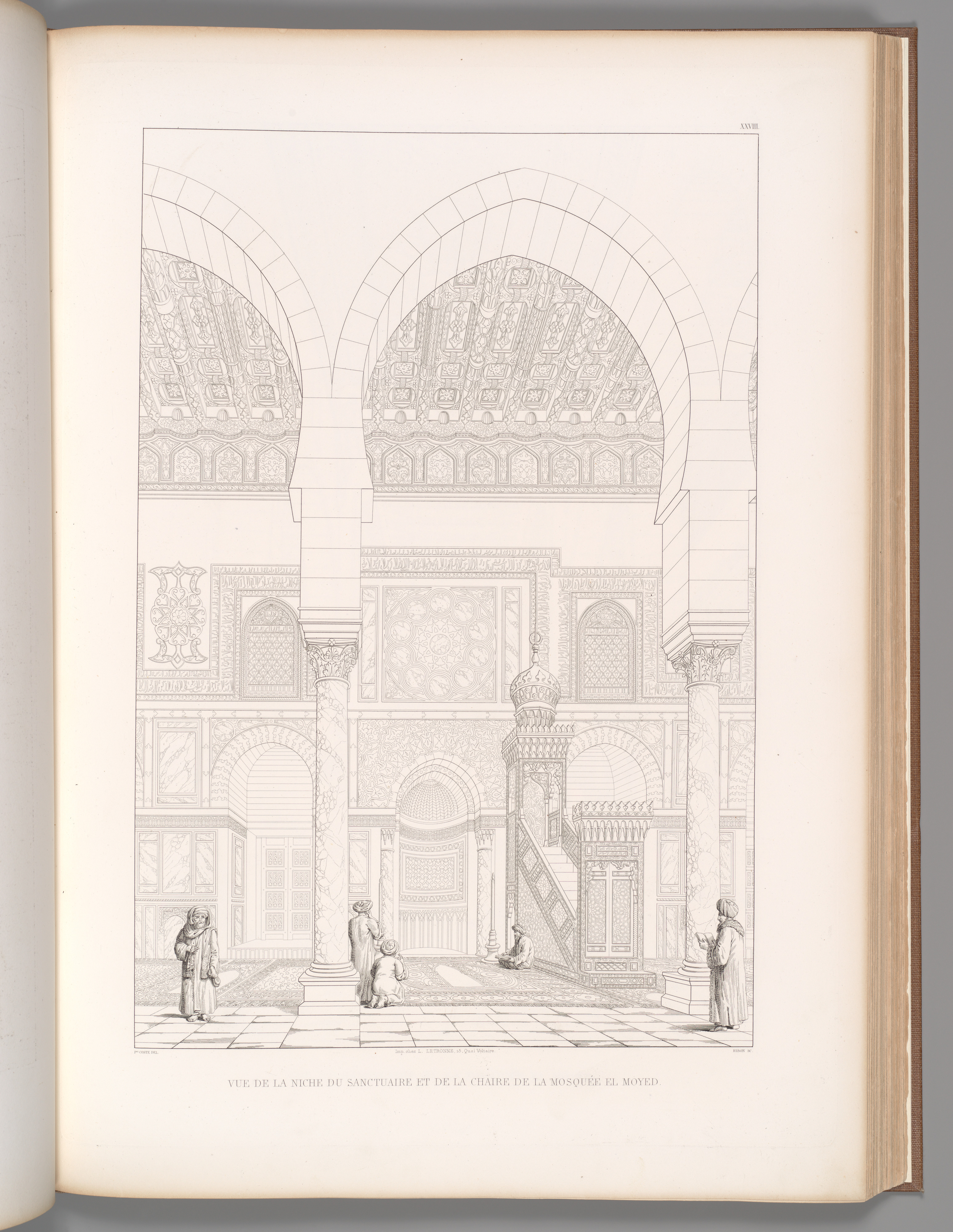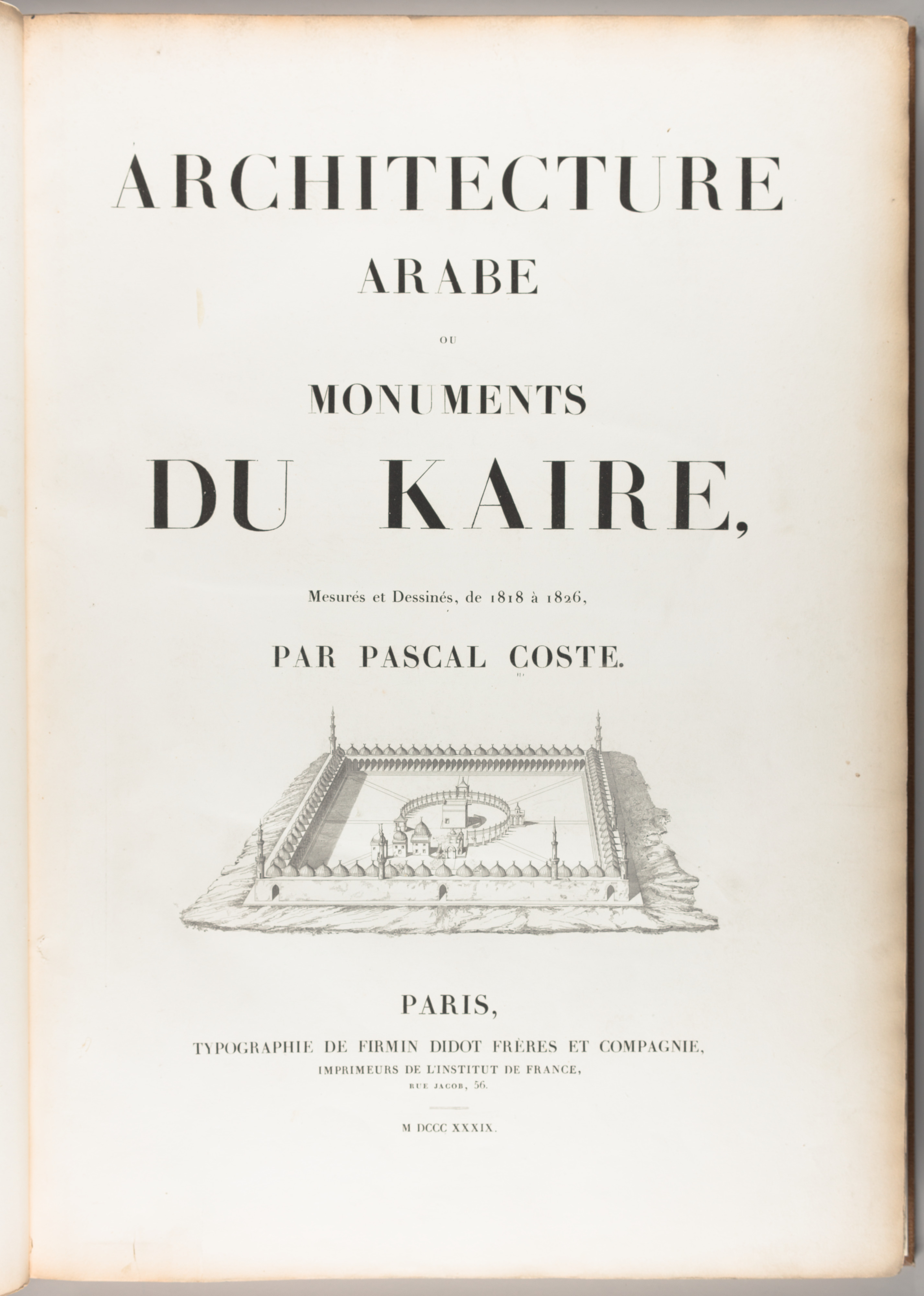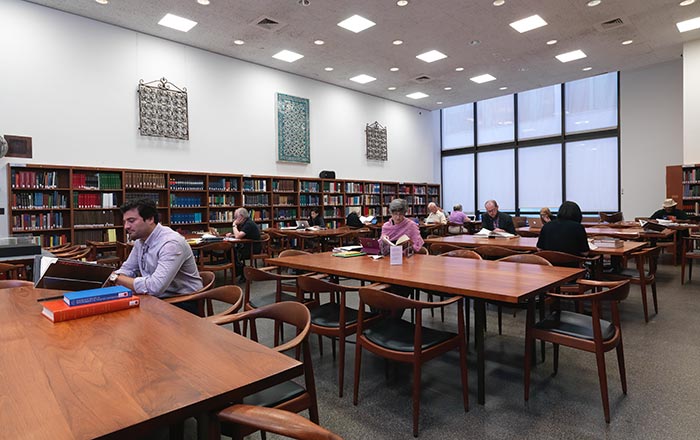Architecture arabe : ou, Monuments du Kaire, mesurés et dessinés, de 1818 à 1826
Author Pascal Coste French
Publisher Firmin Didot Freres French
Not on view
Beginning in the early 1700s, popular travelogues and illustrated publications inspired an appetite among Europeans for study of and travel to the Middle East—and an appreciation of the innovative patterns and designs found in art and architecture there. The Frenchman Pascal Coste was among the pioneering architects who introduced this taste for an Islamic aesthetic, which spread to the United States as well. His Architecture Arabe from Moore’s library contains noteworthy examples of domed structures and arabesque patterns. It may have been among the sources that informed Moore’s experiments with Islamic-inspired ornaments in the early 1860s, as seen in the tea set nearby, when objects from the Islamic world were not yet available on the market.
Due to rights restrictions, this image cannot be enlarged, viewed at full screen, or downloaded.
This artwork is meant to be viewed from right to left. Scroll left to view more.


